There’s a new e-book out that could be a must-read for dancers, academics and administrators. It’s referred to as Nourishing Dance: An Important Information on Diet, Physique Picture, and Consuming Problems by Monika Saigal MS, RD, CEDS, CDN. The analysis offered is important to grasp, however the very best elements of the e-book are the sensible, real-life suggestions from somebody who understands our dance world from the within. Right here, two dietitians who’ve spent their lives working on this world focus on the e-book and the way we are able to finest assist dancers.
I really like the way you begin off the e-book by clearing up some probably difficult terminology. The phrase ‘wholesome’ can typically be tough.
“Once I say, ‘wholesome consuming,’ I imply consuming in a method that’s nourishing, pleasurable, and adaptive and that helps their bodily and psychological well being and a peaceable relationship with meals and their physique (and this may look completely different for everybody).
When working with dancers, I wish to discover what the phrase ‘wholesome’ means to them. This dialog helps reveal issues {that a} dancer may view as wholesome that actually aren’t (for instance, restrictive or compensatory approaches to consuming), and affords alternatives to problem and reframe them so we are able to actually be supportive of the dancer’s well being.”
What does being ‘wholesome’ even imply when somebody is pursuing a profession within the excessive strain world of dance? Your e-book goes into element about this.
“I really like discussing this with dancers! Though there will likely be particular person variability on what this seems to be like in follow, being a ‘wholesome dancer’ contains fueling your physique for dance and life, caring on your physique to assist cut back the danger of damage, getting sufficient sleep and relaxation, caring on your psychological well being, discovering dance/life steadiness, and having/working towards a peaceable relationship with meals and extra balanced and resilient physique picture.”
After years within the dance world, I appreciated your assertion that working towards good self-care truly improves not simply the dancers however the dance world as an entire. How can we foster an surroundings that makes this simpler?
“Those that prepare and take care of dancers want a greater understanding of the results of not prioritizing and supporting dancer well being and well-being, which might be enduring (e.g. high quality of life impacts of damage, disordered consuming habits, poor self-worth and physique picture). That is why I feel it’s important to offer schooling to academics/workers and oldsters, not simply to dancers. It’s vital to grasp what’s at stake if we don’t help dancers in caring for themselves and to acknowledge the inextricable hyperlinks between bodily and psychological well being, self-care, and efficiency. My e-book has some ways we will help — giving sufficient time to eat, shifting our language and messaging, and offering sources to get skilled assist from a dietitian and therapist are only a few.”
Your e-book superbly illustrates the science behind why diets don’t work, and the way they really backfire in the long term. Your chapter, ‘Dancing in Weight-reduction plan Tradition,’ is a must-read for all dancers. What’s one fundamental level you want all dancers may perceive in regards to the ‘weight-reduction plan cycle’?
“Most individuals go on a weight loss program as a result of they need to drop pounds or consider a weight loss program will assist them really feel higher about their physique or will make them more healthy, however weight-reduction plan nearly at all times results in the alternative. This isn’t since you lack willpower or did it incorrect; it’s as a result of diets don’t work.”
In your chapter, ‘Dancing on Empty,’ you tackle one of many primary points I additionally see in my work which is power deficits throughout their work day though dancers get sufficient vitamins later within the evenings. What does ‘Low Vitality Availability (LEA)’ imply?
“LEA is the results of under-fueling, and it signifies that the physique doesn’t have sufficient power to gas train plus all of its different wants (regular physique functioning, development/growth, each day actions), which might result in a number of destructive well being and efficiency penalties.”
I’m seeing many dancers with LEA have increased charges of accidents. What are you seeing in your follow with dancers who’re constantly in an power deficit?
“Along with extra frequent and/or slow-healing accidents, dancers with LEA can really feel extra fatigued or weak and expertise digestive points, sleep disturbances, better stress, and diminished enjoyment from dance.”
Your chapter, ‘Mild Diet for Dancers,’ offers some nice concepts for the way, what and when dancers can get what they should carry out and recuperate. What are your high suggestions?
“Plan forward! Schedule time for grocery buying and meal prep, keep well-stocked with fast and simple meal and snack choices, and at all times have a couple of completely different snack decisions in your bag. I discover that ‘guidelines’ and misinformation about what dancers ‘ought to’ be consuming intervene with consuming sufficient, so embracing flexibility over rigidity and prioritizing adequacy over makes an attempt at ‘excellent consuming’ will also be useful.”
How can diet have an effect on focus, focus and psychological well being?
“Many people have skilled the way it turns into tougher to pay attention and focus once we get too hungry. We’re extra more likely to make errors, have a tougher time studying, and might really feel irritable. Beneath-fueling regularly can contribute to nervousness and despair, lower resilience to emphasize, and be the catalyst for growing disordered consuming. It additionally impacts sleep (which impacts psychological well being) and will increase preoccupation with meals which might have an additive influence on focus, focus and psychological well being.”
Chapter 7 addresses accidents. What’s crucial message?
“Be sure you are consuming sufficient, and, if attainable, get help from a dance dietitian. I typically see injured dancers lower their consumption excessively, normally associated to worry of weight acquire or misconceptions about diet wants throughout damage, and this could delay therapeutic and even forestall full restoration.”
The e-book might be discovered at nourishingdance.com.
For extra info on Monika Saigal, go to msnutrition.com. For extra info on Emily C. Harrison, head to dancernutrition.com.
By Emily C. Harrison MS, RD, LD of Dance Informa.



